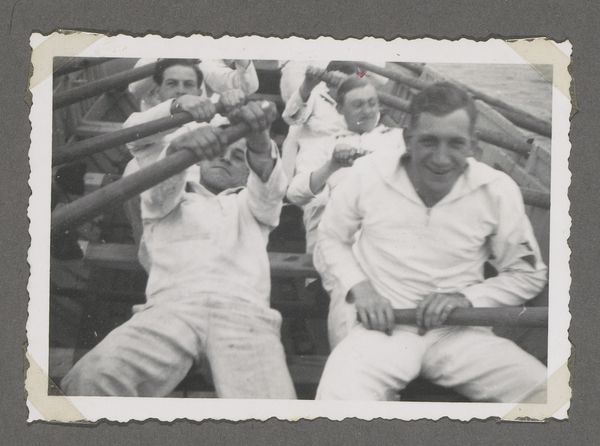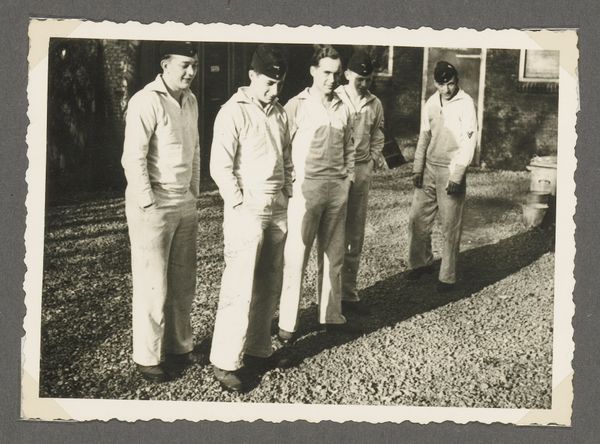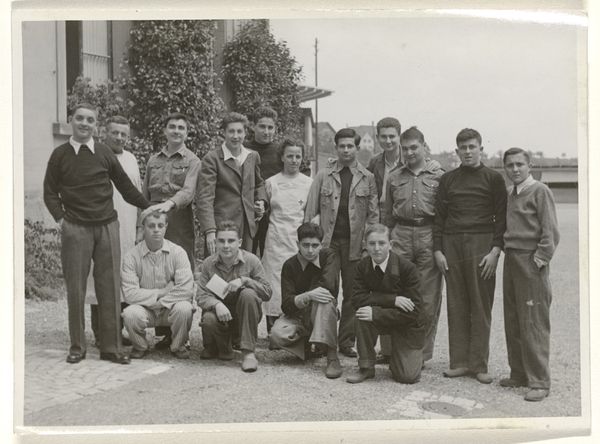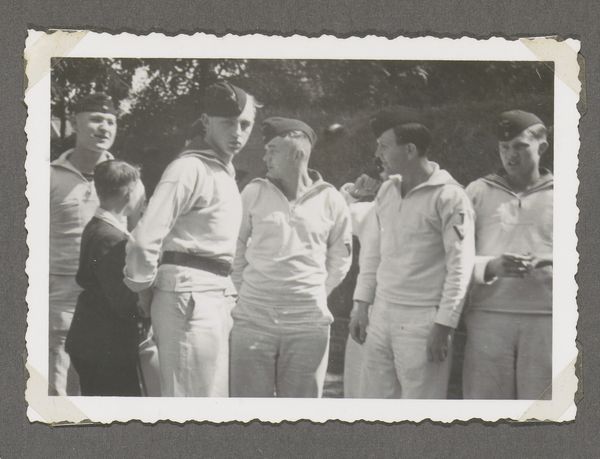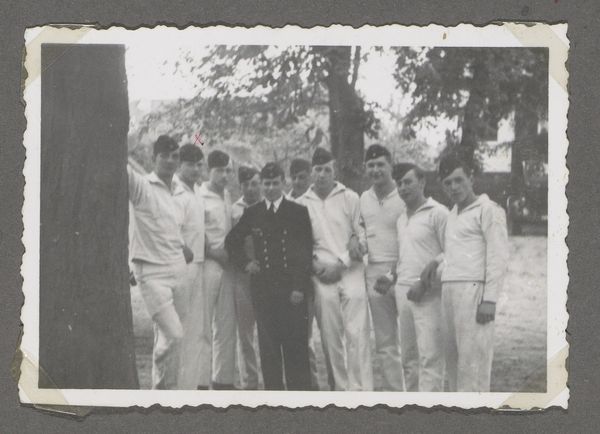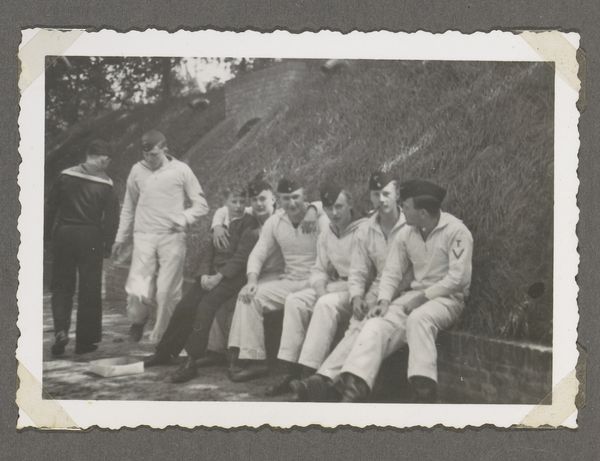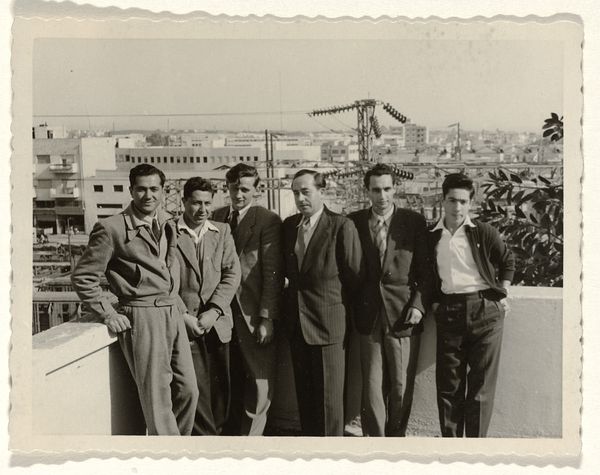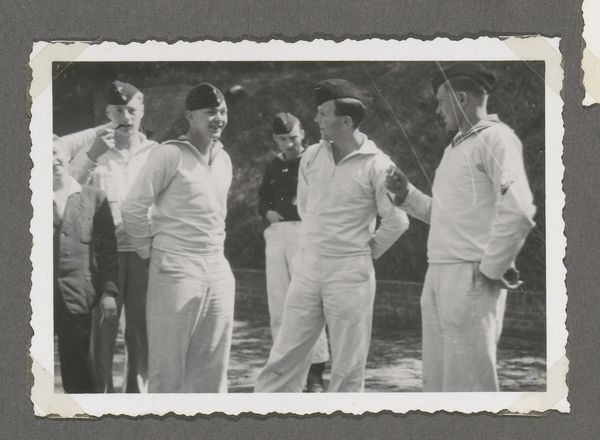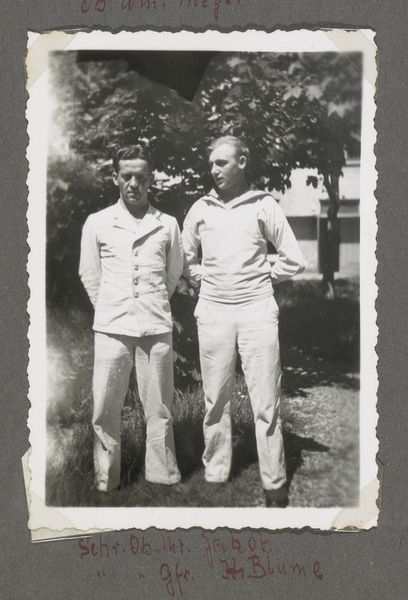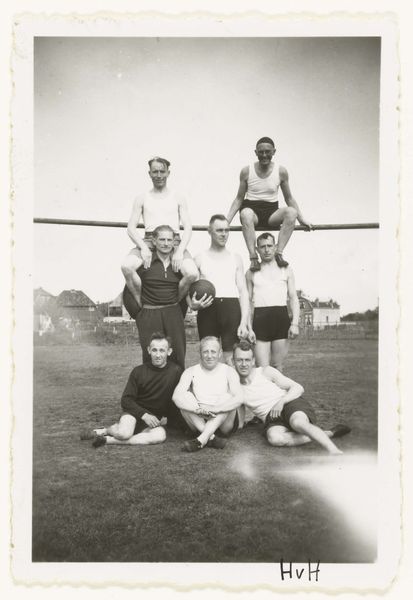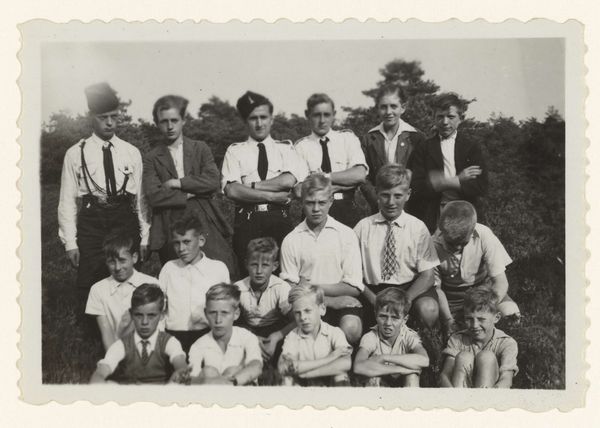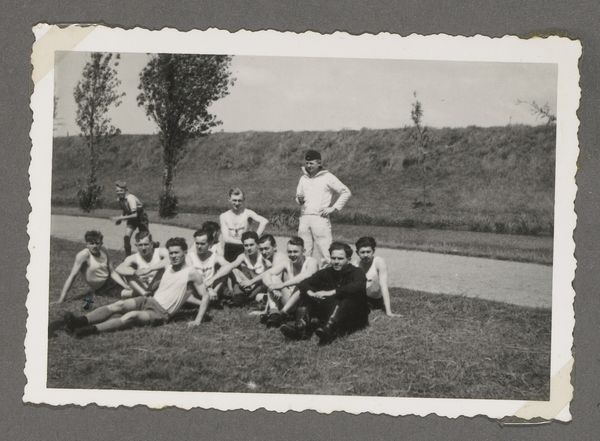
photography, gelatin-silver-print
#
portrait
#
male fashion
#
photography
#
historical fashion
#
group-portraits
#
gelatin-silver-print
#
realism
Dimensions: height 62 mm, width 87 mm
Copyright: Rijks Museum: Open Domain
Curator: This gelatin-silver print, titled "Militairen in een roeiboot" and dating from 1941-1945, presents a striking portrait of soldiers aboard a rowboat. What stands out to you initially? Editor: It's stark, almost severe. The grayscale lends a certain gravity, and the composition, with the men so close together, feels quite intimate despite the military context. Curator: Exactly, let’s delve into that context. Considering it was taken during the Second World War, the very materiality speaks of wartime constraints—gelatin-silver was common, mass-producible, indicative of a photographic culture shaped by conflict. The wear on the print also adds to its narrative of material endurance, right? Editor: Yes, and think about the institutional side – how would these images have circulated? Perhaps for propaganda, or morale boosting? Or maybe purely as personal mementos destined for family photo albums? Curator: Absolutely. It raises questions about the purpose behind such carefully composed group portraits during times of war, who commissioned and consumed the image, its role within constructing narratives of duty and camaraderie. Were these images a constructed performance, or are they genuine portrayals of shared experiences? Editor: That constructed element is key. They’re dressed identically, packed closely. Is this a symbolic leveling in the face of war? Uniformity imposed to represent a unified front? The institution demands they fall in line with image expectations and they become homogenized subjects? Curator: I agree. We must be conscious that we're observing representations, not simply documenting historical truth. The act of creating photographs itself contributes to building and shaping socio-cultural ideas about war. Do you believe this portrait challenges traditional depictions of military might and masculine ideals in wartime? Editor: In a way, yes. There is a vulnerability, a visible fatigue etched onto their faces that challenges heroic narratives. Also, where will it be seen and what politics will be implemented through that lens? Who are the image's patrons or owners now and how does that affect the image's narrative and interpretation? Curator: Precisely. The photograph now serves as a compelling invitation for reinterpretation and examination of past narratives through a critical present lens. Editor: A sombre yet fascinating piece. Examining its material construction allows a view of both an era and its shaping through political, social, and institutional power.
Comments
No comments
Be the first to comment and join the conversation on the ultimate creative platform.
